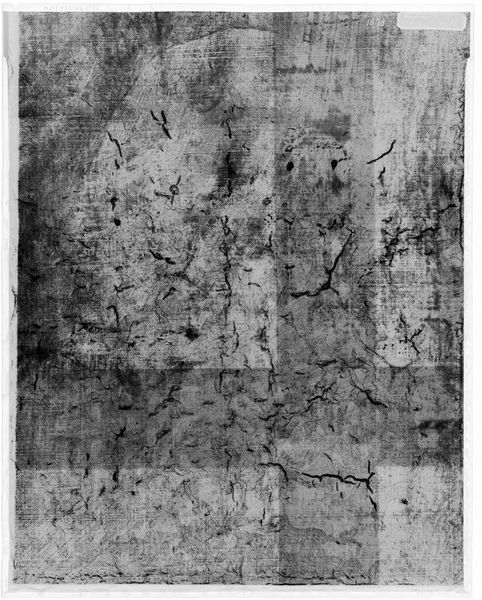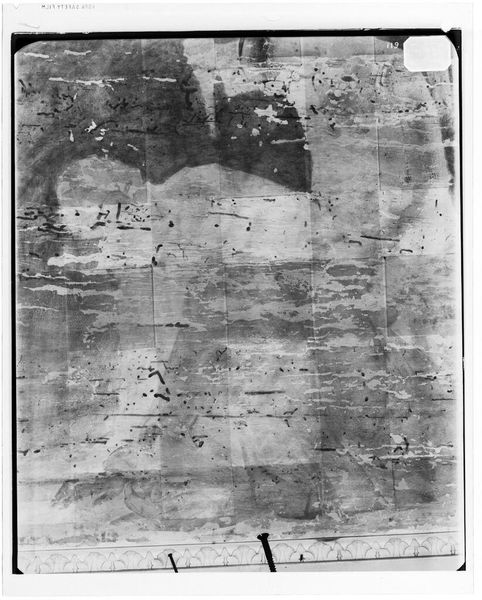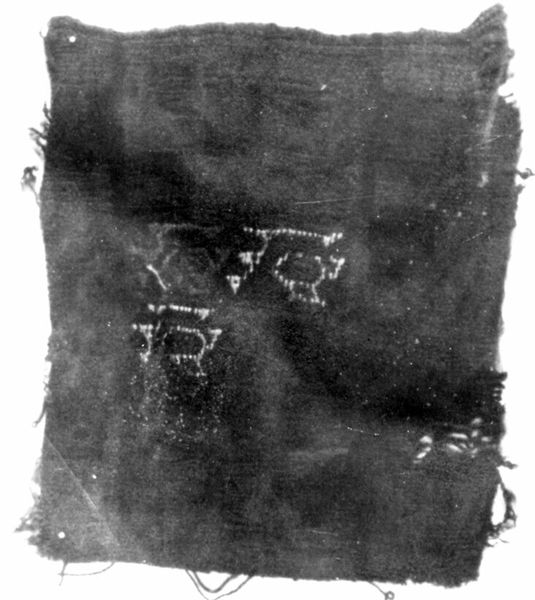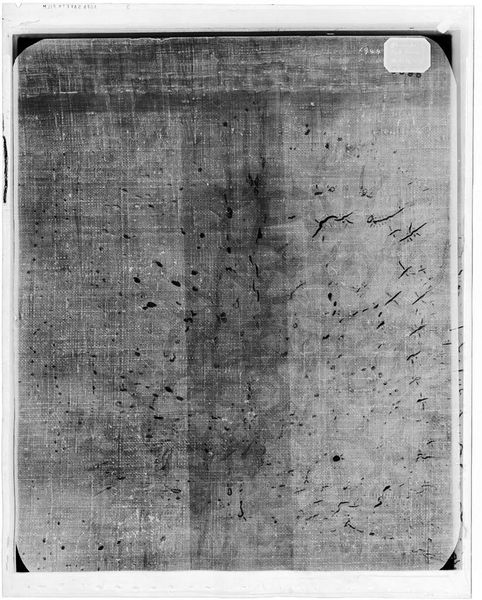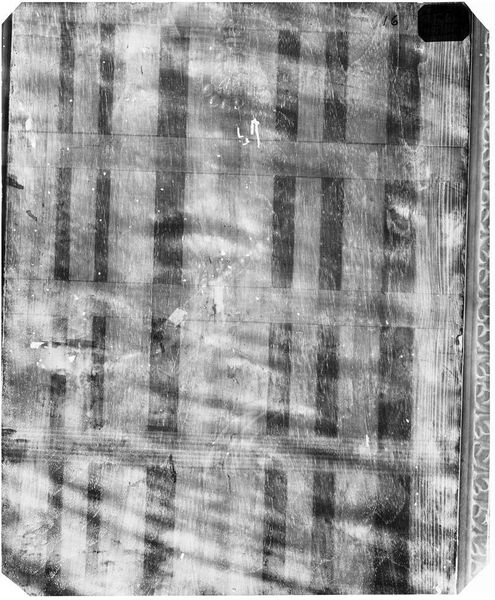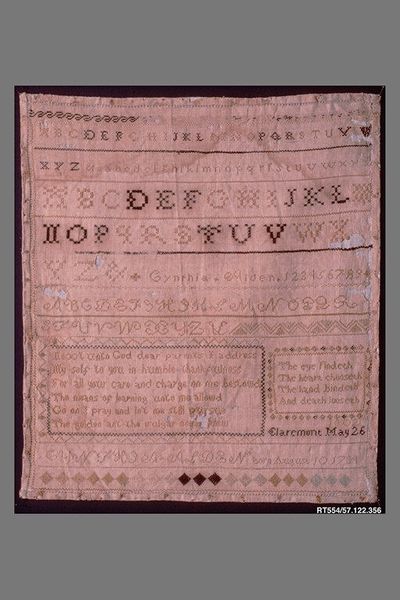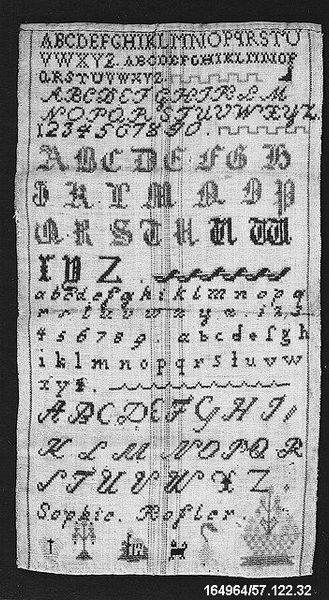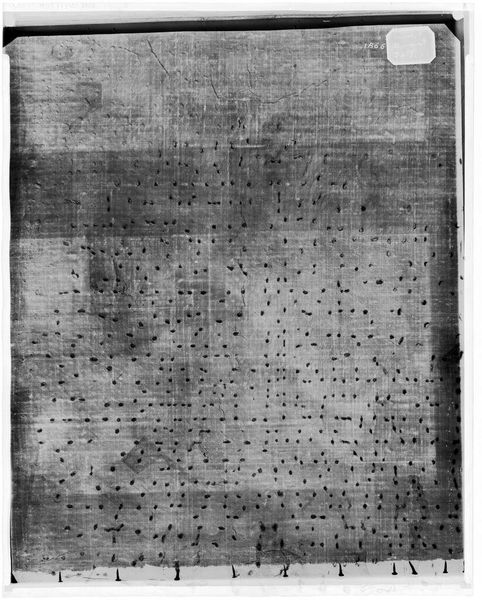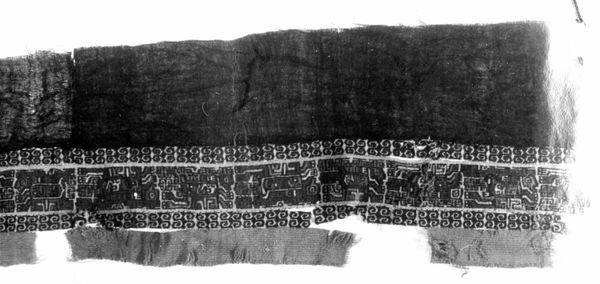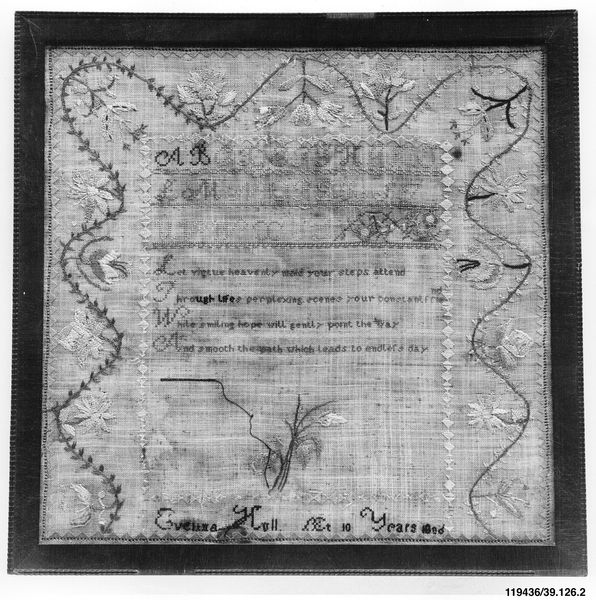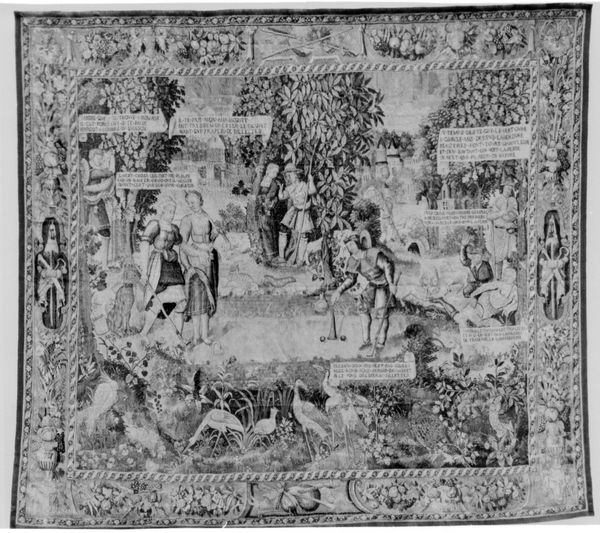
#
worn
#
textured
#
detailed texture
#
carved into stone
#
repetition of black colour
#
carved
#
united-states
#
texture
#
natural texture
#
scratchy texture
#
organic texture
Dimensions: 14 1/2 x 15 in. (36.8 x 38.1 cm)
Copyright: Public Domain
Editor: Here we have an embroidered sampler made in 1823, by Mary Sprague Bingham. What strikes me immediately is the delicate fragility of the fabric, it's so worn, yet the stitches remain. How do you interpret this piece? Curator: This sampler speaks volumes about the lives of women in the 19th century. Ostensibly a demonstration of skill, samplers like these were powerful tools in shaping young women's identities and roles in society. It's not merely decorative. Editor: Shaping their roles? Curator: Exactly. The act of stitching itself was a form of labor, diligence, and obedience that would be highly prized in domestic settings. What do you notice about the choice of motifs and letters? Editor: Well, there are alphabets, numbers, and some simple floral designs... Curator: Right, and these elements point to literacy, numeracy, and an appreciation for nature, all carefully curated attributes intended to make women more desirable marriage partners and capable homemakers. This sampler serves as a document of cultural expectations and gendered labor practices. Do you think this piece is 'finished'? Editor: Not really, in fact, the wear and tear seems to hint at a history beyond its intended purpose as a sampler, maybe as functional cloth later in life. I guess I had only thought of it as pretty stitching, but now I'm thinking about the labor involved and the limited lives of women. Curator: Precisely. This sampler invites us to think critically about art's function in shaping social norms. What was considered skillful, beautiful, or even virtuous was deeply entwined with prevailing power structures. It prompts us to consider: whose voices are being stitched into the historical narrative, and whose are left out?
Comments
No comments
Be the first to comment and join the conversation on the ultimate creative platform.
